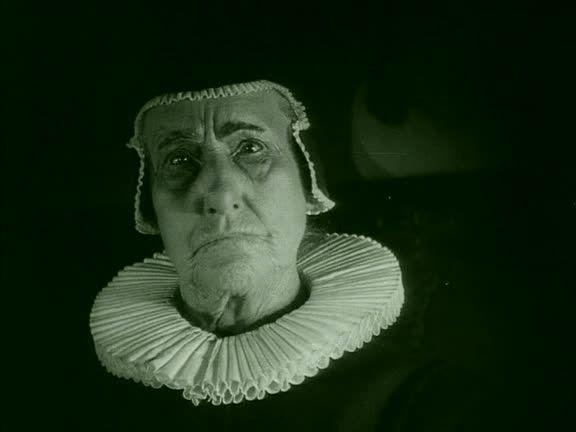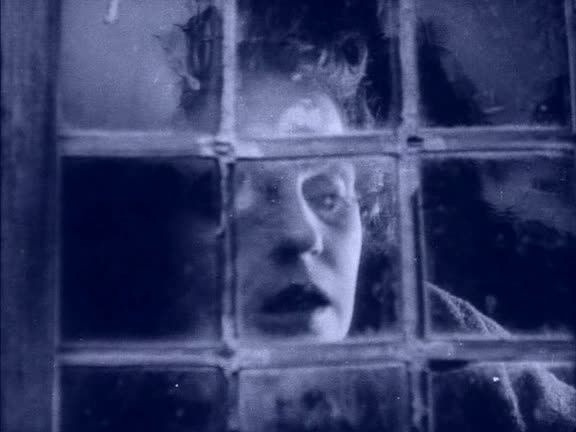
Comedy is one of the last things one would expect from Carl Theodor Dreyer, but his second feature, The Parson's Widow, is in fact a gentle rural comedy. Of course, it's a comedy as directed by Dreyer, which means that it's a curiously slow and lethargic comedy, a moody and patiently paced tale of sexual frustration, poverty and religion. That is to say, it's not exactly a laugh-a-minute comedy, though its somber pace and austere visual style only makes its occasional bursts of goofy humor all the more bracing and startling.
The film's story is extremely old-fashioned, and must have been even when it was made in 1920. It's rooted in rural values and the power of tradition. The poor young man Söfren (Einar Röd) has traveled to a small village to try out for the position of village parson. He wants the post because then he'll be able to marry his sweetheart Mari (Greta Almroth), but in a cruelly ironic twist, he gets the job only to find out that by local tradition he'll have to marry the elderly widow (Hildur Carlberg) of the previous parson. He marries the old woman, partially tricked into it by drunkeness and, perhaps, an enchanted piece of herring, and passes Mari off as his sister, biding his time for the old woman to die so that he'll be able to marry his lover instead.
Dreyer exploits the scenario for some broad comic set pieces, the tone of which jars against the film's general melancholy. Söfren's attempts to evade the widow and get some time alone with his real beloved are comically satisfying, especially when he continually thinks he's flirting with his lover when actually he's accidentally making loving gestures at the widow's equally ancient servant. Also very funny is the early sequence in which Söfren observes two stuffy rivals who are trying out for the parson's job; he sabotages one of them by sticking a feather on his head so that his preaching inspires only laughter from the parishioners. The strangest moment, though, is the scene where Söfren dresses up as the devil, presumably to scare his elderly bride, wearing a sheet painted with a frightening face, with horns and big flopping ears.

Despite the many comic moments, the overall tone of the film is grim and melancholy. Dreyer portrays the widow mostly as a foreboding, exaggeratedly dour presence, her face heavily lined, her mouth permanently twisted into a scowl, captured in numerous closeups of her looking disapprovingly at her unhappy husband. Towards the end of the film, though, the treatment of the widow abruptly shifts to a much more sentimental depiction, pretty much without warning: at one moment Dreyer portrays her as a witch and a harridan, and the next he's suddenly treating her much more warmly, fleshing out the tragic details of her past and making her a much more sympathetic character. The shift to sentimental romanticism is clumsily handled, perhaps, but it makes the film's ending movingly poetic, unexpectedly exploring the pathos of the widow's situation rather than just using her attachment to Söfren as a source of comic relief.
At its best, The Parson's Widow is a tribute to rural tradition, capturing the feel of this small and tight-knit community where old ways are still dominant and life paths are decided by customs passed down through the generations. Dreyer shot on location in the countryside, and this lends the film a grounded, clear-eyed realism, with ascetically beautiful natural landscapes, billowing waterfalls, fields of waving grassy stalks. The locals dance and celebrate, and Dreyer shows real affection for these rural rituals, rooted as they are in ancient traditions and made necessary by poverty and limited means. This is an interesting early film from the future master, a comedy that neatly balances its humor with the darker emotions at its core.
Yep, Dreyer's "comedy" could be compared to relatively elusive element in Bergman and Bresson, and this early work isn't one to lose yourself over. The film is indeed grim and melancholy, though as you note there is some semblance of a balance. I like this film, though of course it was only a blip of what was to come.
ReplyDelete